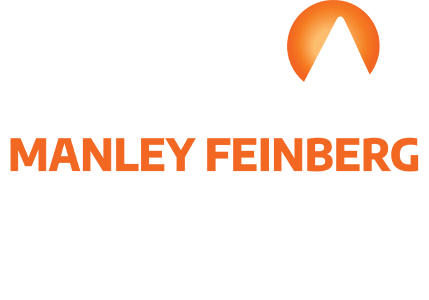Climbing is easier than what you are trying to accomplish in your life every day. Think I’m crazy? I honestly believe this for several reasons.

Number one is that climbing demands a unique clarity of purpose and an outright declaration of focus. In the mountains, you must Declare a Current Climb or you will get nowhere. After all, you can only climb one mountain at a time. This is easy compared to what we deal with in our day-to-day lives.
You tell me: Are you trying to climb just one mountain in your life, or do you feel like you are facing multiple mountains?
- You have to get up in the morning early enough to set yourself up for success; perhaps you even have others in your life you are trying to point in the right direction during those critical early day hours.
- Next, you must engage in your work, and show up with the attitude and physical presence that your team and others you work with expect.
- Now you have to bring the goods and deliver beyond exceptions. Catch up on hundreds of emails. Add in phone calls, voice mail, and hours of meetings. Move some key initiatives forward. Before you know it, the day has slipped away and you are rushing to get out the door.
- After some end-of-day responsibilities are addressed, you walk through the door of your home, hoping you’ll have something left over for those who need you most.
- But you still have to figure out dinner and perhaps some last-minute work.
- Oh, yeah; you still need to squeeze in some exercise and try to avoid drinking or yelling at anyone you really care about.
Just thinking about it all wears me out!

Have you ever attended a great keynote speech or workshop? Or perhaps inspiration came from a good book, a sermon, or a mentor. But you know it when you hear it; an amazing and actionable idea that you believe will make a difference for you, your team and organization.
If you are like me, you get pretty fired up, especially if the idea was delivered in a way that inspired you to immediately take action. Perhaps you even took great notes and were completely committed to action. Next, you walked out the door with the best of intentions. Fast-forward three months and you are stuck in the exact same place you were when you were first enlightened by the idea. Sucks, huh? I know. I’ve been there too many times to count.
The Declare Your Current Climb strategy will ensure this doesn’t happen to you. When you use it consistently and with intention, you will gain significant momentum and actually make progress on ideas that you know will help you grow and advance.
Next you will learn how to put this strategy into action in three steps. We are going to lay down a foundational rule, then help you gain clarity and choose a Current Climb that makes the biggest impact in the fastest timeframe. And finally, most importantly, you’re going to gain several tactical tools to help you build and maintain momentum on your Current Climb so that you can realize results faster.
1. Declare Only One Initiative as Your Current Climb

“But Manley, I already have multiple mountains that I’m trying to climb; why only one?”
Picking one is essential for that very reason: the fact that you are already dealing with the pressure of trying to keep your head above the sea of overwhelm mountains you are facing in your life. Knowing you can’t ignore the other mountains and regular responsibilities you already are committed to, how can you expect adding a new list of initiatives will lead to any success?
I’ve fallen into that trap over and over; trying to add more without first stepping back to take an honest look at everything I was already committed to, and then adding multiple new initiatives to my list. When we try to add more than one initiative that we know is going to truly improve and make a difference, our ambition undermines our focus, which in turn undermines our momentum.
Then, we just give up on the entire list because we simply have too much to maintain already. This is easy, and we may even feel it is justified. “Well, that new project, seminar, book, sermon, meeting…it was a great idea, and I know it would really help if I implemented that, but I’m simply too busy!”
Having the clarity to commit to one, and only one Current Climb gives you laser focus and ensures that what’s truly important gets traction.
2. Select Your Current Climb

Now, which one to pick?
Strategically selecting your current climb is a critical step. When you reflect on ideas, opportunities or project seeds you’ve recently encountered, which ones really jumped out at you? Which ones stirred your passion and got you fired up? Maybe it even evoked a head nod or made you open your eyes wide and sit up. You know, that deep visceral sense of interest when a good idea hits you.
If you don’t already have a way to identify super-hot, actionable ideas as you hear them, I would encourage you to start doing so when taking notes. Use something to identify them inline. (For me, it’s a star with a circle around it, and also an “A” for action and a circle around it.)
Another simple but powerful tactic is to keep significant ideas you want to act upon on a separate piece of paper. Then review your notes within a week of the aha! moment during a regular planning session.
Here’s the next tactical tip: When you are reviewing your list, be aware of your emotional response to ideas that you identified as aha-actionable in the moment. Now, do you notice reluctance to implement? This is the heavy pull of gravity trying to keep you on the ground, and it could be a sign that the idea has the potential for massive impact for you.
Being a climber, I have become keenly aware of the force of gravity. We know it is a constant on earth, but like time, our perception of how hard gravity is pulling down on us is highly subjective.
Have you ever noticed that some days just getting out of bed feels like someone has literally cranked up the gravity setting for the day? Your body, arms, legs, thoughts, and even your words feel heavier, weighted down as you drag through your day. And then, some days it feels like you are running on the moon, with a strong wind at your back.
That is the Emotional Gravity.
Developing inner awareness of your sense of gravity is key. Watch out for items that seem to increase gravity by dragging you down and distracting you; dreaded small projects or activities that are consuming energy and perhaps creating anxiety, ultimately robbing your full focus.
Occasionally, the best Current Climb option for you could be to catch up on or knock out one of these items. I know it’s hard to declare a single current climb, so as you are evaluating your potential, feel free to maintain a Current Climb Queue and know that you aren’t saying “no” to a bigger initiative—just no for right now.
You can use the following list to quickly evaluate a potential Current Climb. The greater the number of items that ring true as you consider the initiative, the more seriously you should consider it as your Current Climb:
- When you think about taking even a small action on the idea, you think of a list of other things that are more pressing. This can be fear hidden beneath emotional gravity.
- It is a barrier that stands in your way of accomplishing other goals, initiatives, or needed change, and could act as a domino or clear the path for other progress.
- In a safe state of mind in which you are inspired, courageous, or reflecting, it stands out as worth pursuing.
- It’s of high importance (may or may not have high urgency).
- It is something at least on the edge of your comfort zone.
- You know it could lead to breakthrough results in one or more areas of your life.
- You understand why it is worth pursuing; it is emotionally palpable and crystal clear.
Once you pick just one Current Climb, the final step is to declare with commitment and conviction. It helps to at least say it to yourself and write down, “No matter what, I’m going to move this forward every day.”
3. Build and Maintain Momentum
“Ideas are Free; Execution is Priceless” – Scott Ginsberg (2011)
Selecting a single Current Climb is the easy part. Building and maintaining momentum is the ultimate crux of implementing this Vertical Lesson. Here are three keys to building and maintaining a forward momentum:
First key: Focusing on your Current Climb
Do this first before the storm of chaos sets in. As soon as possible, ideally before you check email or engage in meetings and other daily activities, sit down and take a small action to move your Current Climb forward. Do it first.
Second key: Do something every single day to move your Current Climb forward, no matter what.
Sounds easy, but building new habits is a critical failure point in the adoption of new desired behaviors and routines.
Knowing that installing new habits is a key to realizing results, I’ve searched for decades for the magic answer to how we can change our behaviors. In 2012, I discovered the work of BJ Fogg, Ph.D., a behavioral scientist and professor at the Stanford Graduate School of Business.
Dr. Fogg is recognized as a leading expert in changing human behavior. His work stood out to me for two reasons; it is very practical and immediately actionable, and most importantly, he’s achieved remarkable results. His techniques work. Dr. Fogg discovered that when people attached a new habit to an existing routine, they were much more likely to create a lasting habit.
Here’s a simple but extremely effective way to leverage this breakthrough idea in your life. Let’s say that every day, you come in and make your coffee, tea, or fill up your water bottle. Without fail, you execute that routine. What I would encourage you to do is take a simple sticky note, write your Current Climb on it, then rubber-band that to the side of your cup or bottle. Now, every time you make your drink, as well as when you drink from it, you will be reminded to execute a small step toward your Current Climb.
Third key: Take as little as 5 minutes of effort towards your Current Climb to build incredible momentum.

This is counter-intuitive, as we believe we have to spend significant time, even hours to move important initiatives forward. The problem with carving out extensive periods of time is that in the long run, it’s not realistic. It’s just a matter of time before you say “Well, I just don’t have time to work on my Current Climb today with everything else I have going on.”
But you always have five minutes. If you can work on your Current Climb for up to twenty minutes, go for it. Beware of trying to carve out large chunks of time. When you feel more internal resistance, reduce the amount of time you focus on your Current Climb.
I’ve also found using a timer to be very effective. Set it for five to twenty minutes and notice how working against the clock cranks up your focus.
4. Visibility Drives Velocity

Keep your Current Climb visible. I recommend leveraging old-school tools and modern technology to keep your Current Climb in your face. Using technology, schedule a standing calendar event, a recurring task, or even project management software.
Change your smartphone wallpaper to something related to your Current Climb. For old-school tools, the sticky note is still a favorite.
Write your Current Climb on multiple sticky notes and try placing them on your monitor or laptop, your alarm clock, your mirror, your dashboard, or any other spot that is visible in your day-to-day life.
It might drive your partner crazy, but it is worth it.
 To learn more about my 9 Vertical Lessons for Leading with Impact check out my new book Reaching Your Next Summit!
To learn more about my 9 Vertical Lessons for Leading with Impact check out my new book Reaching Your Next Summit!
Your climb to excellence is never easy. The human drive within calls us to what is possible. The principles shared in this book will renew your commitment and inspire your quest for excellence. You will realize more of your potential as you sharpen your focus, act with courage, and generate momentum in reaching your next summit—and beyond.
Photo credit: https://careeremployer.com/

